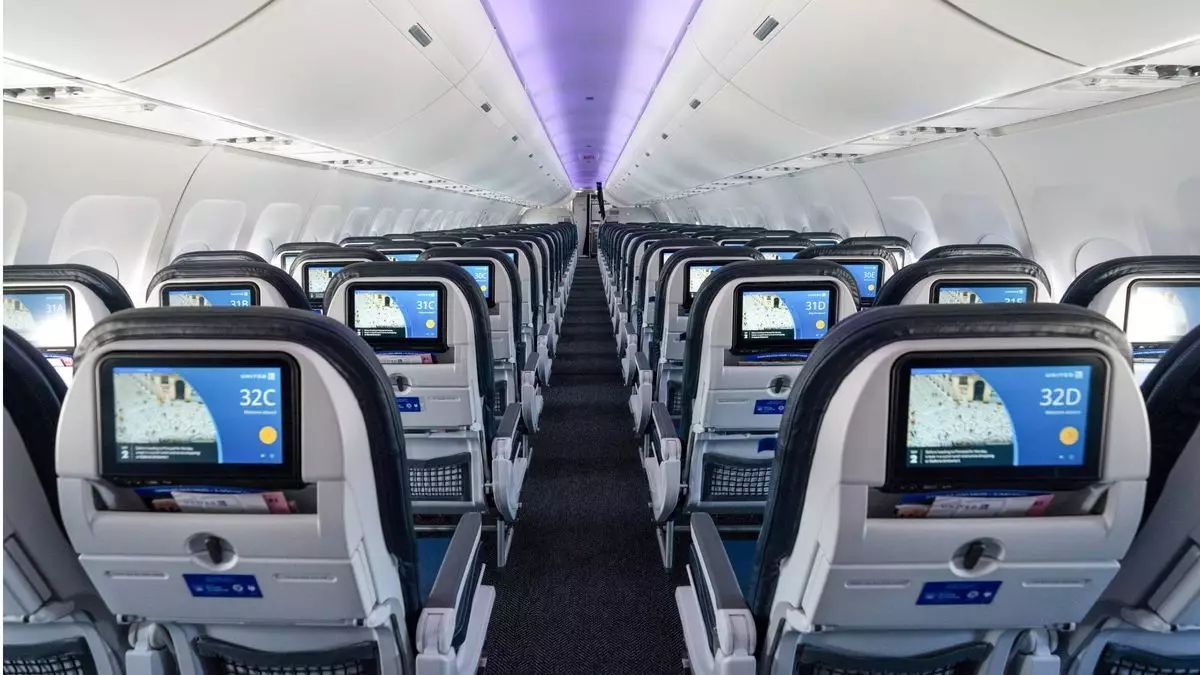In recent years, the airline sector has undergone significant transformations, driven largely by evolving customer preferences and competitive market dynamics. Among the most notable developments is United Airlines’ increasing reliance on its basic economy ticketing model, a strategy that has begun to reshape its business outlook. In this article, we analyze the implications of this growth trajectory and what it means for both passengers and the airline’s competitive positioning.
During their latest earnings call, United Airlines announced a remarkable 20% rise in revenue from basic economy fares, building on a staggering 50% growth from the previous year. This surge underscores the increasing market acceptance of the lowest fare tier, which now constitutes approximately 16% of United’s domestic passenger groups, a marked increase from 12% in the past year.
United’s Chief Commercial Officer, Andrew Nocella, characterized basic economy as a “home run,” emphasizing its transformative role in the company’s business operations. With passengers increasingly seeking budgetary fare options, United’s strategy appears to align perfectly with market demands, highlighting a successful adaptation to changing consumer behavior. Yet, this rise begs questions about customer experience and the broader implications of such fare strategies.
While basic economy tickets offer lower fares, they come with stringent limitations, such as the inability to select seats, restrictions on carry-on luggage, and inflexible flight change policies. Passengers are allowed only a personal item that fits under the seat, a stark contrast to more traditional fare tiers, which typically offer enhanced amenities and customer choices.
Critics argue that these restrictions can lead to discomfort and dissatisfaction among the flyers, impacting their overall travel experience. While United is undoubtedly reaping economic benefits from this fare structure, it raises concerns about how these trade-offs may alienate segments of its customer base who expect more value from their travel dollar.
United’s operational strategy points towards further increases in the availability of basic economy seats. The airline projects an average of 145 seats per departure by 2027, representing a notable leap from 104 seats in 2019. As larger aircraft come into operation, the potential to capitalize on the basic economy demand becomes feasible, further embedding this model in United’s core operations.
This strategic focus on capacity expansion speaks to United’s significant investment in maintaining market competitiveness. By pushing out a larger volume of basic economy tickets, the airline can optimize both revenue and seat utilization. However, this raises the question of whether United can sustain profitable margins while balancing capacity and consumer expectations.
While United Airlines is doubling down on basic economy, it simultaneously endeavors to enhance its premium offerings, including its Polaris business class. This approach not only caters to budget-conscious travelers but also retains a competitive edge in the premium segment. United now finds itself on par with industry leaders like Delta and Alaska, reporting impressive margins that reflect a well-rounded product mix.
In the third quarter, United reported a remarkable pre-tax margin of 9.7%, which outstripped Delta’s 8.9%. This strong performance indicates that United’s dual-strategy approach—enhancing both low-cost and premium services—might be the right path forward in an increasingly competitive landscape.
Despite a net income decrease of 15.1% year-over-year, United Airlines demonstrated resilience with a revenue of $14.84 billion, surpassing Wall Street expectations. However, this positive outlook was tempered by criticisms from the Association of Flight Attendants-CWA regarding planned stock buybacks amidst ongoing labor negotiations.
As United resumes share repurchases after a hiatus since the onset of the COVID-19 pandemic, stakeholders are divided. While buybacks indicate strong financial health and investor confidence, they also reflect broader tensions within the airline about resource allocation.
Ultimately, United Airlines’ basic economy model represents both an opportunity and a challenge. As consumer preferences shift, the balance between affordability, quality of service, and operational sustainability will dictate the airline’s future success and its ability to stand firm against competitors in an evolving market landscape.


Leave a Reply